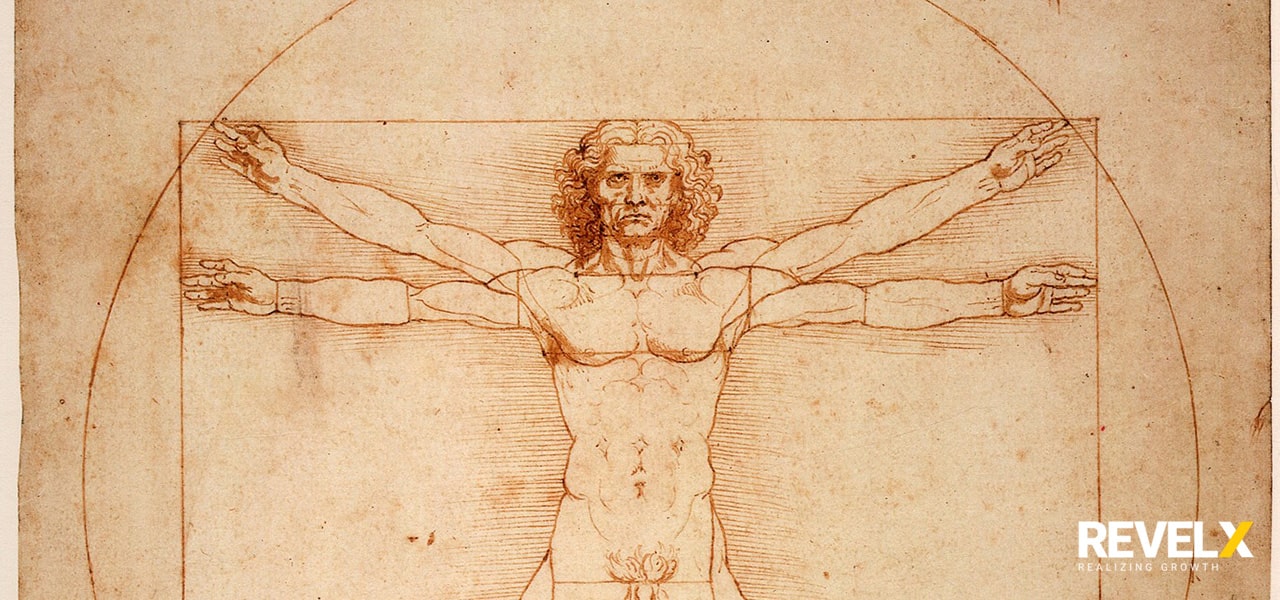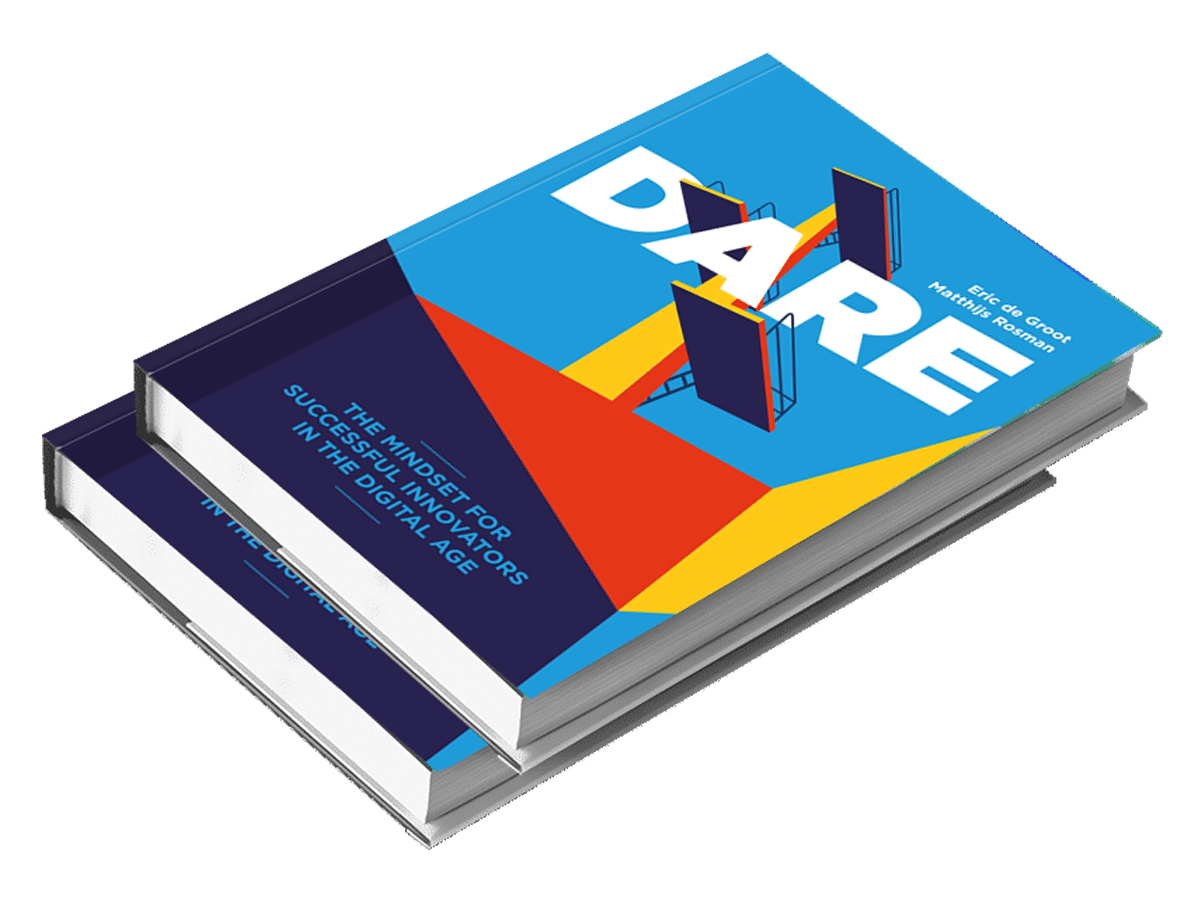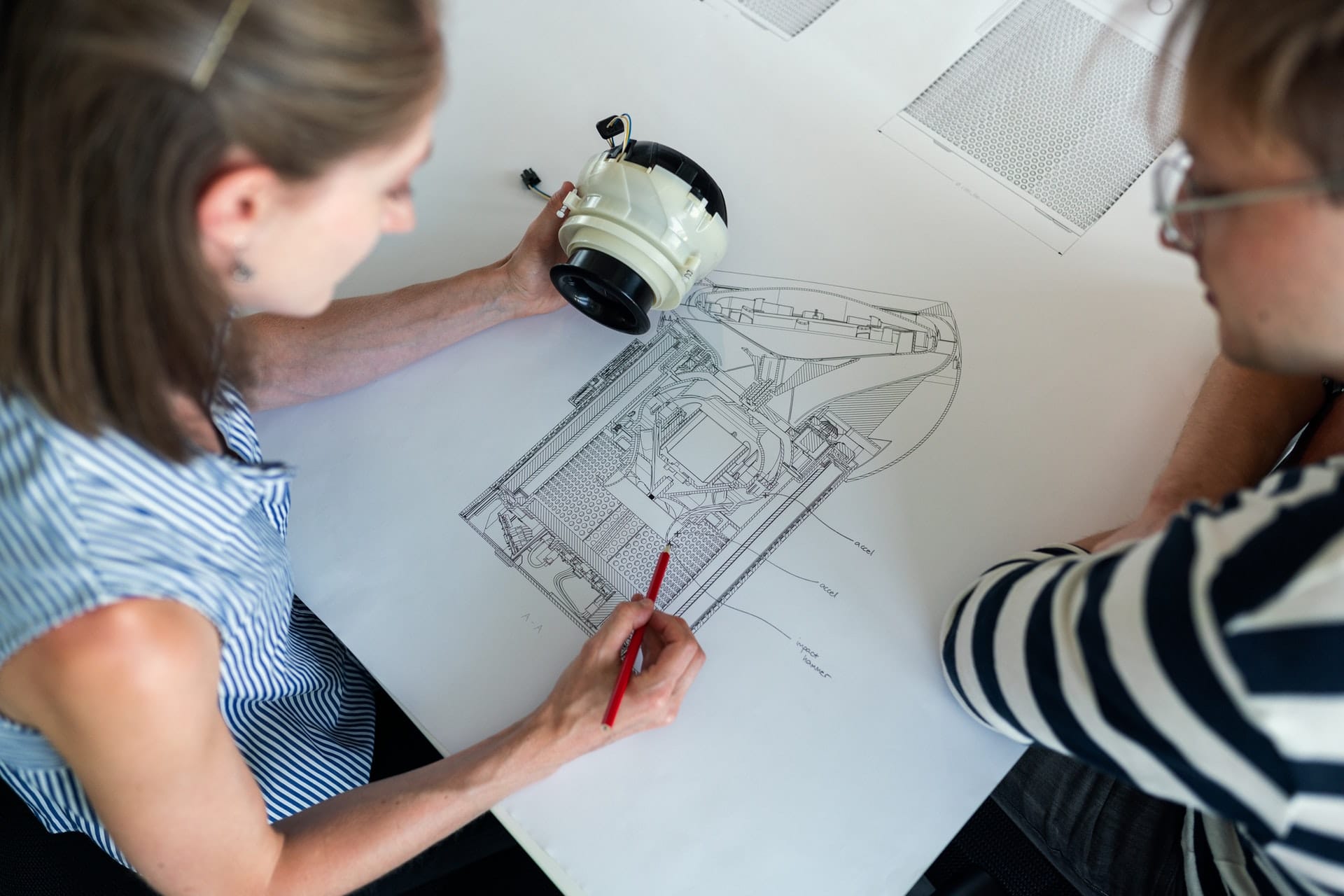Last week we announced that we have published the last post on the meaning of DARE. However, one of our great sponsors of the book, our publisher, persuaded us in profiling the one person that might just be one of the most exceptional DARE practitioners in history. Exceptional because he represents all four key elements in one person. While reading the biography of Leonardo da Vinci published by Walter Isaacson, we realized he is the quintessential DARE practitioner. Allow us to take you on a historic journey and picture Leonardo as the growth entrepreneur of the Renaissance, well over 100 years before the first corporate – the VOC in Amsterdam – was ever founded (1602).
Leonardo da Vinci blended intense observation skills with theory, experimentation and multidisciplinary use of geometry, art, biology, anatomy, physics, mathematics, optics and engineering. He truly was a self-made professional. A painter, sculptor, writer, poet, singer/songwriter, illusionist, architect, engineer, anatomist, geometrist, geologist and physicist. He had the ability to make connections across all these disciplines: art, science, humanity and technology. Besides a growth entrepreneur, he was a fashionista and trendsetter of his age, roaming the streets in colorful pink and purple garments, defying the rules of fashion and frequently embarking on adventurous quests.
He had a relentless curiosity and drive for experimentation. He was engaged in a constant search for wisdom and a perpetual need to challenge it. He preferred to learn from experimentation rather than theory. Leonardo based his work primarily on observations, discerning patterns and testing their validity through further testing and experimenting. Just like any good DARE practitioner would do.
The foundation for observations and experiments
At a later age, after absorbing more knowledge, he combined the experimental approach with theoretical frameworks and hypotheses. As a true growth entrepreneur , he built a complementary approach. Leonardo also adhered to the RAQ (rarely asked question) method. He asked questions like: why is the sky blue? Why is the fish in the water swifter than the bird in the sky? Or, why do people sleep? Those endless lists of questions were often the starting point for Leonardo and the foundation for his observations and experiments. He dared to question the things that people took for granted or believed to be true. This led to true innovations.

Da Vinci, a unique individual for sure, never worked alone. During his apprenticeship in Verrocchio’s Florence studio, he enjoyed and experienced the benefits of working in a team. Much of Leonardo’s thinking and work was collegial. Ideation was for Leonardo, as a cross disciplinary thinker, a collaborative endeavor. This explains why there are many disputes about the true authorship of his works.
Early startup and scale-up platforms
The process of bouncing around thoughts and jointly formulating ideas was greatly facilitated by the Renaissance courts of that time. It was customary at the time that the noblemen ruling those courts – such as the Medicis in Florence, the Sforzas in Milan, (later) the French kings, and even Henry VIII (who became famous for his many wives, but was also an enlightened Renaissance king with a strong desire to learn the unknown) – invited the enlightened artists, poets, architects, sculptors, painters, scientists and philosophers and gave them and their pupils (or team members as we see them now) housing and income for their contributions and works of art. It was a setup today’s growth entrepreneurs would recognize, with startup and scale-up platforms and our Growth Labs and/or Accelerators. *This is one of the topics we will address later in future posts discussing the structural necessities for innovation. Ideas are often generated in physical places where people with diverse backgrounds and competences meet and create.
The traits of a true growth entrepreneur
Leonardo also showed a strong ability for pragmatism and realism. Knowing very well how to get things done and to balance between the powers of the split-up Italy of that time: the Florentines, Milanese, Venetian, French and the Roman Church, amongst others. It is not a coincidence that he became friends with Machiavelli – a humanist and diplomat and founder of political science – and it was a fruitful and helpful relationship.
Leonardo only had one major flaw for a growth entrepreneur: he was a bad finisher. The main inhibitor for this was his perfectionism and quest for ideals; quite contrary to the current belief that ‘done is better than perfect.’ Some also argue that he was easily distracted by everything around him; the flip side of the curious mind. Either way, Leonardo is a true source of inspiration.
Recognize some of the key competencies of Leo? Good to take measure of yourself and develop and or acquire what’s missing to start on your innovative adventures. What is your source of inspiration for personal development as an innovator? We would like to hear from you! Contact us at eric@revelx.nl or matthijs.rosman@revelx.nl.

Introducing DARE: The Mindset for Successful Innovators in The Digital Age
Learn how successful innovators and business leaders realize growth with DARE – now Amazon’s #1 best-selling title!
Eric de Groot
Boardroom strategist with unparalleled creative brainpower. Always focused on growth. Creates speed by combining business modeling with inventive pragmatic solutions. Invests in involvement over a sustained period.
Related Posts
January 7, 2021
Strategies to counter disruption or to become a disrupter yourself
We see the same things happening in the…




